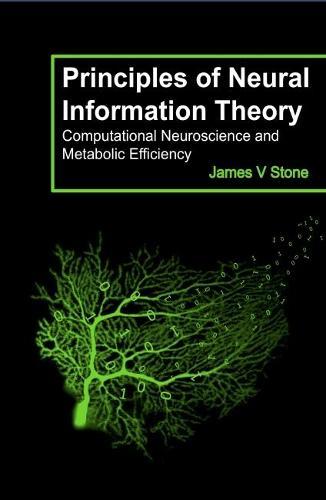Full Product Details
Author: James V. Stone
Publisher: Sebtel Press
Imprint: Sebtel Press
Edition: Annotated edition
ISBN: 9780993367922
ISBN 10: 0993367925
Pages: 260
Publication Date: 08 June 2018
Audience:
College/higher education
,
Tertiary & Higher Education
Format: Paperback
Publisher's Status: Active
Availability: In Print

This item will be ordered in for you from one of our suppliers. Upon receipt, we will promptly dispatch it out to you. For in store availability, please contact us.
Reviews
""This is a terrific book, which cannot fail to help any student who wants to understand precisely how energy and information constrain neural design. The tutorial approach adopted makes it more like a novel than a textbook. Consequently, both mathematically sophisticated readers and readers who prefer verbal explanations should be able to understand the material. Overall, Stone has managed to weave the disparate strands of neuroscience, psychophysics, and Shannon's theory of communication into a coherent account of neural information theory. I only wish I'd had this text as a student!"" Peter Sterling, Professor of Neuroscience, University of Pennsylvania, USA. ""Essential reading for any student of the why of neural coding: why do neurons send signals they way they do? Stone's insightful, clear, and eminently readable synthesis of classic studies is a gateway to a rich, glorious literature on the brain. Student and professor alike will find much to spark their minds within. I shall be keeping this wonderful book close by, as a sterling reminder to ask not just how brains work, but why."" Professor Mark Humphries, School of Psychology, University of Nottingham, UK. ""This excellent book provides an accessible introduction to an information theoretic perspective on how the brain works, and (more importantly) why it works that way. Using a wide range of examples, including both structural and functional aspects of brain organisation, Stone describes how simple optimisation principles derived from Shannon's information theory predict physiological parameters (e.g. axon diameter) with remarkable accuracy. These principles are distilled from original research papers, and the informal presentation style means that the book can be appreciated as an overview; but full mathematical details are also provided for dedicated readers. Stone has integrated results from a diverse range of experiments, and in so doing has produced an invaluable introduction to the nascent field of neural information theory. "" Dr Robin Ince, Centre for Cognitive Neuroimaging, Institute of Neuroscience and Psychology, University of Glasgow, UK.
This is a terrific book, which cannot fail to help any student who wants to understand precisely how energy and information constrain neural design. The tutorial approach adopted makes it more like a novel than a textbook. Consequently, both mathematically sophisticated readers and readers who prefer verbal explanations should be able to understand the material. Overall, Stone has managed to weave the disparate strands of neuroscience, psychophysics, and Shannon's theory of communication into a coherent account of neural information theory. I only wish I'd had this text as a student! Peter Sterling, Professor of Neuroscience, University of Pennsylvania, USA. Essential reading for any student of the why of neural coding: why do neurons send signals they way they do? Stone's insightful, clear, and eminently readable synthesis of classic studies is a gateway to a rich, glorious literature on the brain. Student and professor alike will find much to spark their minds within. I shall be keeping this wonderful book close by, as a sterling reminder to ask not just how brains work, but why. Professor Mark Humphries, School of Psychology, University of Nottingham, UK. This excellent book provides an accessible introduction to an information theoretic perspective on how the brain works, and (more importantly) why it works that way. Using a wide range of examples, including both structural and functional aspects of brain organisation, Stone describes how simple optimisation principles derived from Shannon's information theory predict physiological parameters (e.g. axon diameter) with remarkable accuracy. These principles are distilled from original research papers, and the informal presentation style means that the book can be appreciated as an overview; but full mathematical details are also provided for dedicated readers. Stone has integrated results from a diverse range of experiments, and in so doing has produced an invaluable introduction to the nascent field of neural information theory. Dr Robin Ince, Centre for Cognitive Neuroimaging, Institute of Neuroscience and Psychology, University of Glasgow, UK.
Author Information
Dr James Stone is an Honorary Reader in Vision and Computational Neuroscience at the University of Sheffield, England.




